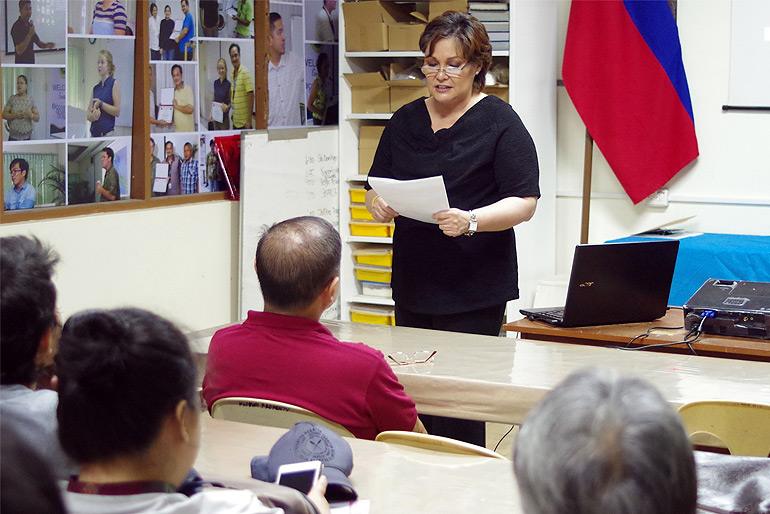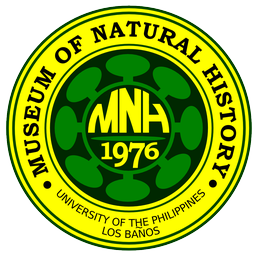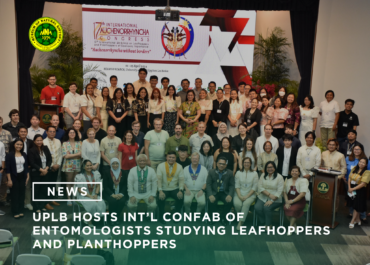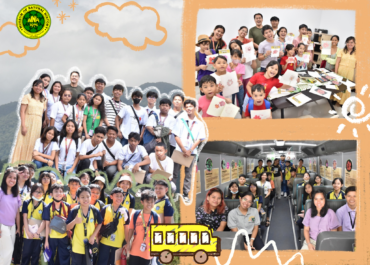
The UPLB Museum of Natural History got a real treat from the showbiz world in time for its 40th anniversary celebration last 30 September. Singer-performer Leah Navarro, a pop sensation in the 1980s graced the closing of the Museum’s anniversary week and introduced the film “To Live and Be Free.”
At the start of her talk, Navarro said “thank you for the invitation to introduce a film in which she merely played a small part, but of which she is extremely proud of.”
“I am really in awe and very honored to be at the Museum of Natural History,” she added.
According to Ms. Navarro, her involvement in the film in 1978 was just a coincidence because a relative who was working for Philippine Airlines asked her to be involved as film narrator. Philippine Airlines then was funding a documentary film by the National Geographic Society on the Philippine Eagle.
“I said yes, not because I wanted to have it in my resume, but because I grew up reading on National Geographic Magazines from cover to cover, and I was fascinated with wildlife” she recounted. Back then Navarro already had a growing career as a singer.
Navarro became a part of a small documentation team, and with the guidance of the experts in the team, was able to write the spiels and narrated the film.
“Firstly, I am forever grateful to Dr. Dioscoro S. Rabor, for teaching me the effects of kaingin on our forestlands and the wildlife that live in there,” Navarro intimated.
Through the film, Leah Navarro had the chance to work with people who eventually became giants in their own fields of expertise —world-renowned, multi-awarded and Emmy Award-winning wildlife photographer/cinematographer Neil Rettig; Robert S. Kennedy, author of the ornithologists bible “A Guide to the Birds of the Philippines,” and the Philippine Eagle Foundation’s Director Dennis Salvador.
“To Live and Be Free” was finally released in 1981 after several production delays because of the security problems in Mindanao.
In her introduction, Navarro spoke “the Philippine Eagle, Pithecophaga jefferyi, is the star of the documentary, and we were just all the supporting staff,” Navarro said.
“We describe our national bird as strong, noble, majestic and surprisingly gentle. To me, the Philippine Eagle is a continuing inspiration despite deliberate and unintended poaching, trophy-hunting, habitat encroachment. This beautiful bird fights with beak and talons for its survival,” she added.
In her ending, Navarro said that “the eagle is a symbol of our freedom, in constant danger of extinction. Like what a Filipino song popularized near the end of Martial Law says, we are not meant to live incarcerated by any person, belief or state of mind. We are meant to thrive in concert with Nature, restricted only by respect for it and for one another.”
“Like the Philippine Eagle,” Navarro pointed out, “we are meant to live and be free.”
Search
Archives
Categories
- Announcement (21)
- Feature (21)
- News (141)
- Press Release (55)
- Research (4)
- Services (3)



